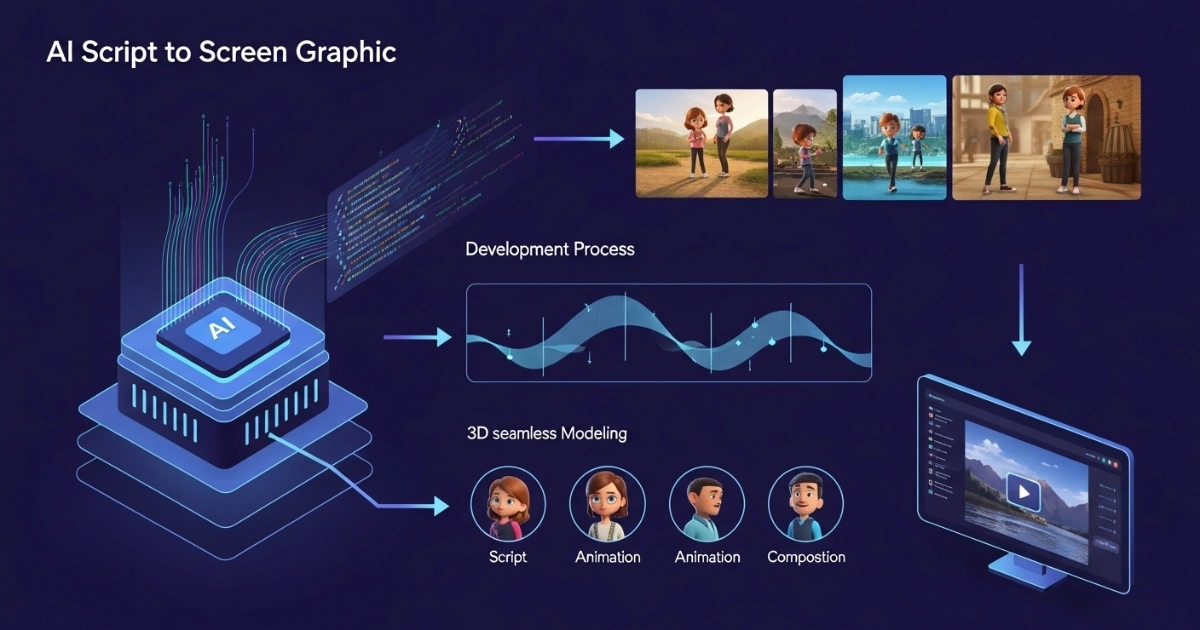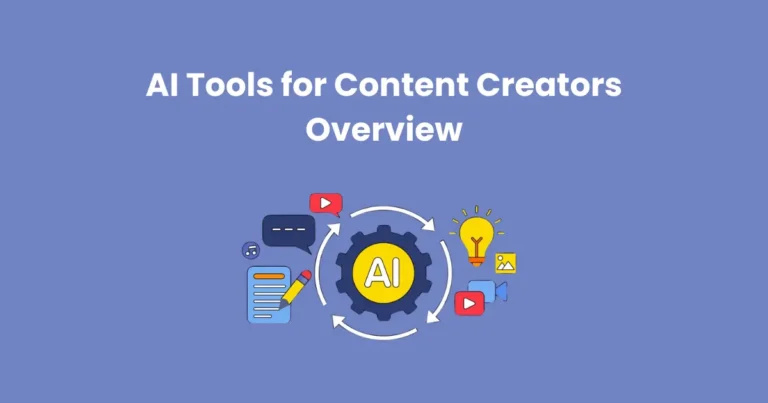AI Script to Screen Pipelines: Revolutionizing Filmmaking

Contents
- 1 What Are AI Script to Screen Pipelines?
- 2 The Stages of AI Script to Screen Pipelines
- 3 Key Benefits of AI Script to Screen Pipelines
- 4 Challenges and Limitations of AI Script to Screen Pipelines
- 5 Top AI Tools for Script to Screen Pipelines
- 6 How to Implement AI Script to Screen Pipelines
- 7 The Future of AI Script to Screen Pipelines
The filmmaking industry is undergoing a seismic shift with the integration of AI script to screen pipelines, transforming how stories are crafted, produced, and delivered to audiences. These pipelines leverage artificial intelligence to streamline every stage of film production, from scriptwriting to post-production, enabling filmmakers to maximize efficiency and creativity. By automating repetitive tasks and enhancing creative decision-making, AI is redefining traditional workflows. This article explores how AI script to screen pipelines work, their benefits, challenges, and the tools driving this revolution, all while highlighting how filmmakers can adopt these technologies to stay competitive in a rapidly evolving industry.
What Are AI Script to Screen Pipelines?
AI script to screen pipelines refer to the seamless integration of artificial intelligence tools across the filmmaking process, encompassing pre-production, production, and post-production. Unlike traditional methods that rely heavily on manual processes, these pipelines use AI to automate tasks, analyze data, and enhance creative outputs. For instance, AI can generate scripts, create storyboards, optimize shooting schedules, and even edit footage, all while reducing costs and time. By connecting these stages into a cohesive workflow, AI pipelines ensure a more efficient and data-driven filmmaking process.
Moreover, AI pipelines are not about replacing human creativity but augmenting it. They allow filmmakers to focus on storytelling and artistic vision while AI handles time-consuming technical tasks. As a result, filmmakers can produce high-quality content faster and more cost-effectively. With the rise of AI tools, the industry is witnessing a paradigm shift, making these pipelines indispensable for modern production houses.
The Stages of AI Script to Screen Pipelines
To understand the impact of AI script to screen pipelines, let’s break down their application across the three main phases of filmmaking: pre-production, production, and post-production.

Pre-Production: Crafting the Vision
In the pre-production phase, AI script shine by streamlining scriptwriting, storyboarding, and planning. AI-powered tools like ScriptBook and Plotagon analyze scripts for marketability, predict audience reception, and suggest improvements based on data-driven insights. For example, ScriptBook uses machine learning to evaluate scripts by comparing them to successful films, offering feedback on narrative structure and emotional impact.
Additionally, AI can generate storyboards from scripts, saving hours of manual work. Tools like Storyboarder and Runway ML use natural language processing (NLP) to convert text descriptions into visual representations, allowing directors to visualize scenes early. AI also optimizes pre-production logistics, such as scheduling and budgeting, by analyzing historical data to predict costs and timelines accurately. Consequently, filmmakers can make informed decisions, reducing the risk of budget overruns.
Production: Enhancing Efficiency on Set
During production, AI script to screen pipelines enhance efficiency by automating tasks like camera operation, lighting adjustments, and real-time performance analysis. AI-driven cameras, such as those powered by NVIDIA’s Jetson platform, can track subjects, adjust focus, and optimize framing autonomously. This allows cinematographers to focus on creative shots rather than technical adjustments.
Furthermore, AI tools like Adobe Sensei integrate with on-set workflows to provide real-time feedback on lighting and composition. For instance, AI can detect suboptimal lighting conditions and suggest adjustments, ensuring every shot meets professional standards. By automating these processes, AI script reduce the need for reshoots, saving both time and resources. Additionally, AI-powered virtual production tools, like Unreal Engine, enable filmmakers to create realistic digital environments, reducing the reliance on physical sets.
Post-Production: Streamlining Editing and Effects
Post-production is where AI pipelines truly transform the filmmaking process. AI-powered editing tools, such as Adobe Premiere Pro’s Auto Reframe and DaVinci Resolve’s Neural Engine, automate tasks like cutting, color grading, and audio balancing. These tools analyze footage to identify key moments, suggest edits, and even generate rough cuts, significantly reducing editing time.
Moreover, AI enhances visual effects (VFX) by automating complex tasks like rotoscoping and motion tracking. Tools like Runway ML and Deepfakes Studio use generative AI to create realistic CGI elements or seamlessly replace faces in footage. For example, AI can generate lifelike crowd scenes or enhance backgrounds without requiring extensive manual work. As a result, post-production teams can deliver polished films faster, meeting tight deadlines without compromising quality.
Key Benefits of AI Script to Screen Pipelines
The adoption of AI script offers numerous advantages, making them a game-changer for filmmakers. Here are the key benefits:

1. Time Efficiency
One of the most significant advantages of AI script to screen pipelines is their ability to save time. By automating repetitive tasks like script analysis, storyboarding, and editing, AI reduces production timelines significantly. For example, AI tools can generate a rough cut in hours, a process that traditionally takes days or weeks. This efficiency allows filmmakers to meet tight deadlines and release films faster.
2. Cost Savings
AI script to screen pipelines reduce production costs by minimizing manual labor and optimizing resource allocation. For instance, AI-driven budgeting tools can predict expenses accurately, preventing costly overruns. Additionally, virtual production and AI-generated VFX eliminate the need for expensive physical sets or extensive reshoots, making filmmaking more affordable, especially for independent studios.
3. Enhanced Creativity
Contrary to concerns about AI stifling creativity, AI script to screen pipelines empower filmmakers to explore new possibilities. AI tools provide data-driven insights, such as audience preferences or trending genres, enabling writers to craft compelling stories. Moreover, AI-generated visuals, like those created by MidJourney or DALL·E, inspire directors to experiment with innovative aesthetics, pushing creative boundaries.
4. Improved Accuracy and Consistency
AI ensures consistency across all production stages. For example, AI-powered color grading tools maintain visual uniformity across scenes, while audio analysis tools ensure consistent sound quality. This level of precision enhances the overall quality of the film, creating a polished final product.
5. Scalability for All Budgets
AI screen pipelines are accessible to both large studios and independent filmmakers. Tools like Runway ML and Descript offer affordable subscription models, democratizing access to advanced AI capabilities. As a result, small-budget productions can compete with big-budget films, leveling the playing field.
Challenges and Limitations of AI Script to Screen Pipelines
While AI script to screen pipelines offer immense potential, they also come with challenges that filmmakers must address to maximize their benefits.

1. Learning Curve
Adopting AI tools requires a learning curve, especially for teams accustomed to traditional workflows. Filmmakers may need training to integrate AI script to screen pipelines effectively, which can initially slow down production. However, many AI tools are designed with user-friendly interfaces, reducing the learning barrier over time.
2. Ethical Concerns
AI in filmmaking raises ethical questions, particularly around authenticity and intellectual property. For instance, AI-generated scripts or visuals may inadvertently replicate existing works, leading to copyright disputes. Additionally, the use of deepfakes or AI-altered performances can raise concerns about consent and representation. Filmmakers must navigate these issues carefully to maintain trust with audiences.
3. Dependence on Technology
Over-reliance on AI script to screen pipelines can lead to a loss of human touch in storytelling. While AI excels at automation, it lacks the emotional nuance that human creators bring. Filmmakers must strike a balance between leveraging AI for efficiency and preserving the artistic essence of their work.
4. Data Privacy and Security
AI tools often rely on cloud-based processing, raising concerns about data privacy. Scripts, footage, and other sensitive materials could be vulnerable to breaches if not properly secured. Filmmakers should choose reputable AI platforms with robust security measures to protect their intellectual property.
Top AI Tools for Script to Screen Pipelines
Several AI tools are driving the adoption of AI script to screen pipelines. Here are some of the most popular ones:

- ScriptBook: Analyzes scripts for marketability and audience appeal, providing data-driven feedback to improve narratives.
- Runway ML: Offers AI-powered editing, VFX, and storyboarding capabilities, ideal for pre-production and post-production.
- Adobe Sensei: Integrates with Adobe Creative Cloud to automate editing tasks like color grading and audio balancing.
- Unreal Engine: Powers virtual production with AI-driven real-time rendering, reducing the need for physical sets.
- Descript: Uses AI for audio editing and transcription, streamlining podcast and dialogue-heavy film production.
- MidJourney: Generates high-quality concept art and visuals, inspiring creative direction in pre-production.
These tools are constantly evolving, with new features being added to enhance their integration into AI script to screen pipelines. Filmmakers should explore these options to find the best fit for their projects.
How to Implement AI Script to Screen Pipelines
To successfully adopt AI script to screen pipelines, filmmakers should follow these steps:
- Identify Needs: Assess which stages of production could benefit most from AI, such as scriptwriting, editing, or VFX.
- Choose the Right Tools: Select AI tools that align with your budget, skill level, and project requirements.
- Train Your Team: Invest in training to ensure your team can effectively use AI tools and integrate them into existing workflows.
- Start Small: Begin with pilot projects to test AI script , gradually scaling up as you gain confidence.
- Monitor Results: Continuously evaluate the impact of AI on your production process, adjusting strategies to maximize efficiency and creativity.
By following these steps, filmmakers can seamlessly integrate AI script to screen pipelines into their workflows, unlocking their full potential.
The Future of AI Script to Screen Pipelines
The future of AI script to screen pipelines is incredibly promising, with advancements poised to further revolutionize filmmaking. Emerging technologies like generative AI and real-time rendering will enable even more sophisticated pipelines. For example, AI could soon generate entire films from a single prompt, complete with scripts, visuals, and soundtracks, tailored to specific audience demographics.

Additionally, AI script to screen pipelines will become more accessible as costs decrease and tools become more user-friendly. This democratization will empower independent filmmakers to create studio-quality content without massive budgets. Furthermore, AI’s ability to analyze global audience trends will help filmmakers craft universally appealing stories, expanding their reach.
However, as AI becomes more prevalent, the industry must address ethical concerns, such as ensuring transparency in AI-generated content and protecting creators’ rights. By balancing innovation with responsibility, AI script to will continue to shape the future of filmmaking.
Conclusion
AI script to screen pipelines are transforming the filmmaking industry by streamlining workflows, reducing costs, and enhancing creativity. From script analysis to post-production, these pipelines empower filmmakers to produce high-quality content efficiently. While challenges like ethical concerns and learning curves exist, the benefits of AI far outweigh the drawbacks. By adopting AI script to screen pipelines, filmmakers can stay ahead in a competitive industry, delivering captivating stories to audiences worldwide. As AI technology evolves, its integration into filmmaking will only deepen, promising a future where creativity and efficiency go hand in hand.






